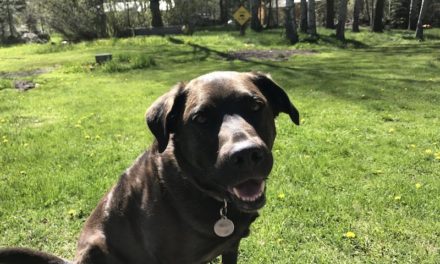Spring is here, It’s time to go Gold Mining!
By Charles P. Watson
[media-credit name=”Charles Watson” align=”alignleft” width=”300″] [/media-credit]Can you feel it? That tug on your soul, that calling from “them thar” hills, that burning, passionate desire to go gold mining again? The bitter cold is behind us and the snow is melting filling the drainages with the turbulent waters that you
[/media-credit]Can you feel it? That tug on your soul, that calling from “them thar” hills, that burning, passionate desire to go gold mining again? The bitter cold is behind us and the snow is melting filling the drainages with the turbulent waters that you
know are bringing more gold down from the highlands – and you want some of
that!
And why not? The price of the yellow metal has remained above $1,500 per ounce for a few years now. It peaked in August 2011 at $1,910 and many economists are forecasting the price of gold will double or triple, or even rise much, much more. It is why people are trading in their briefcases, suits and ties for picks, shovels and pans. A record number of mining claims were filed in the last few years, mining supply dealers can’t keep equipment on the shelves, and people are re-learning the historic art of making a living off the land by mining
gold!
The history of gold is riddled with tall tales, folklore, and exaggerations that would make the less inclined scoff and say “bah humbug! There’s no more gold out
there!” But knowledgeable miners and prospectors of today are still finding gold,
and many are becoming pretty darn rich – and having fun doing it!
Of course there is still gold out there – lots of it!! The Gold Rush is on so don’t get left behind!!
Remember your California history? One of the largest gold areas in the Golden State is called the Mother Lode Belt – a 400 mile-long, 75 mile-wide swath of gold-bearing rocks and gravels in the foothills of the Sierra. Numerous old mining towns dot the map with names like Seneca, Quincy, Downieville, Nevada City, Placerville, Angles Camp, and Sonora. Each have their own history, how the gold was discovered, where the richer mines were, and who the people were, that found their fortunes. For some, it is the history of those times that provides them with their wealth, while for others; it is and will always be about the yellow metal. Both are compelling and each will change how you live your life.
Plumas County is the northern-most county in the Mother Lode Belt, and was one of the richest gold-bearing counties in California. The Plumas County Museum is a huge source of information of what happened in the county during the earlier gold rushes. Be sure to check out their exhibits too! The Plumas- Eureka State Park has wonderful displays as well. Find an expert, a geologist or miner, and learn from them. Research the internet for information, tips and techniques. You’ll find gold – there’s no doubt! There is still plenty of it out there
But what about the laws, rules and regulations? Didn’t California ban gold
mining? Well of course not! The laws have changed and the historic ways of rape and pillaging of the land is no longer tolerated. That is a good thing because there were some atrocious mining methods practiced in the past.
Today, recreational prospecting using picks, shovels, sluice boxes and pans can
be performed without permits. You can still use a highbanker (a sluice box with a
pump attachment) without a permit; however, you cannot dump the muddy water
directly into the stream. You need to find a way to keep the waters of the State of
California as clean as you can.
Once you move to the next level where your plan includes using larger equipment, such as backhoes, excavators, dozers, wash plants, etc., you must have a permit. The State of California wants the miner to think about their mining
activities and not only plan on how the mining will be conducted, but also how the land is reclaimed. The miners need to be conscious of keeping surface and
groundwater safe and preventing erosion leaving the site during even the largest storm events.
If you can do that, and a few other responsible things, then you can go mining! It
may seem cost prohibitive at first, but the rewards can be very, very profitable –
even in California.
One of the prohibitions on mining currently in a political whirl wind is suction
dredging. “Suction dredging” is where three pieces of equipment (a pump, a suction hose, and a sluice box work harmoniously to remove sediment from the bottom of a river, stream or lake to collect gold. Current law says you cannot operate a suction dredge within 300 feet of a river, stream or lake of the State of California. There are ways around the prohibition, which are too technical to go into here, so consult your local prospector supply shop or a knowledgeable geologist. If you don’t know the specifics, then don’t do it.
Gold mining is not a new thing, it is something within our blood – something that we feel is right. Today’s miners are smarter than ever before. They have better
tools to recover the metal and the wisdom to work with Mother Nature. Today’s
miners are responsible citizens and reclamation is part of the mining process.
It is a thrill to find your first gold speck, flake or nugget. Once you do, you will be
hooked forever. It is fun for the whole family and who knows, maybe, just maybe,
if you are a wee bit lucky… you too will jump for joy, click your heels and shout
“Eureka! I found it!












